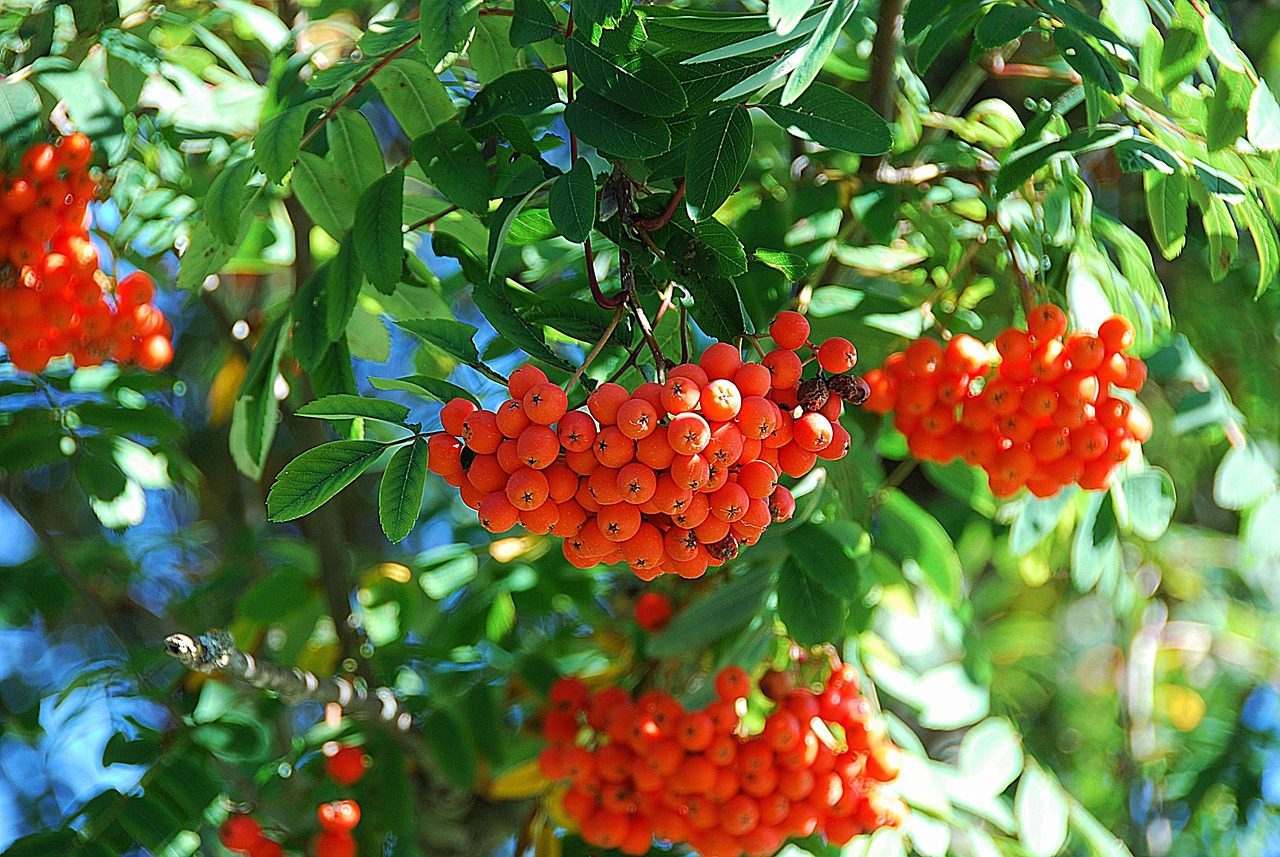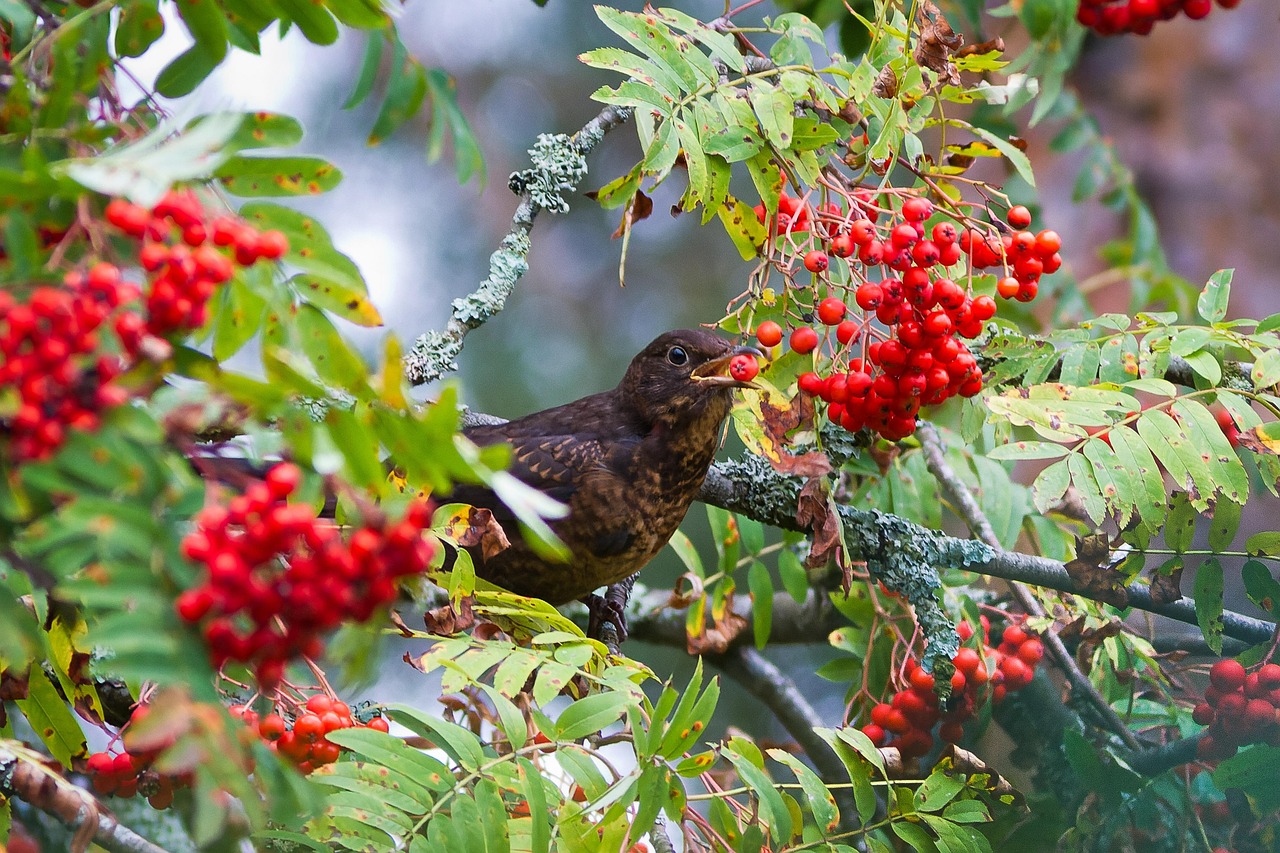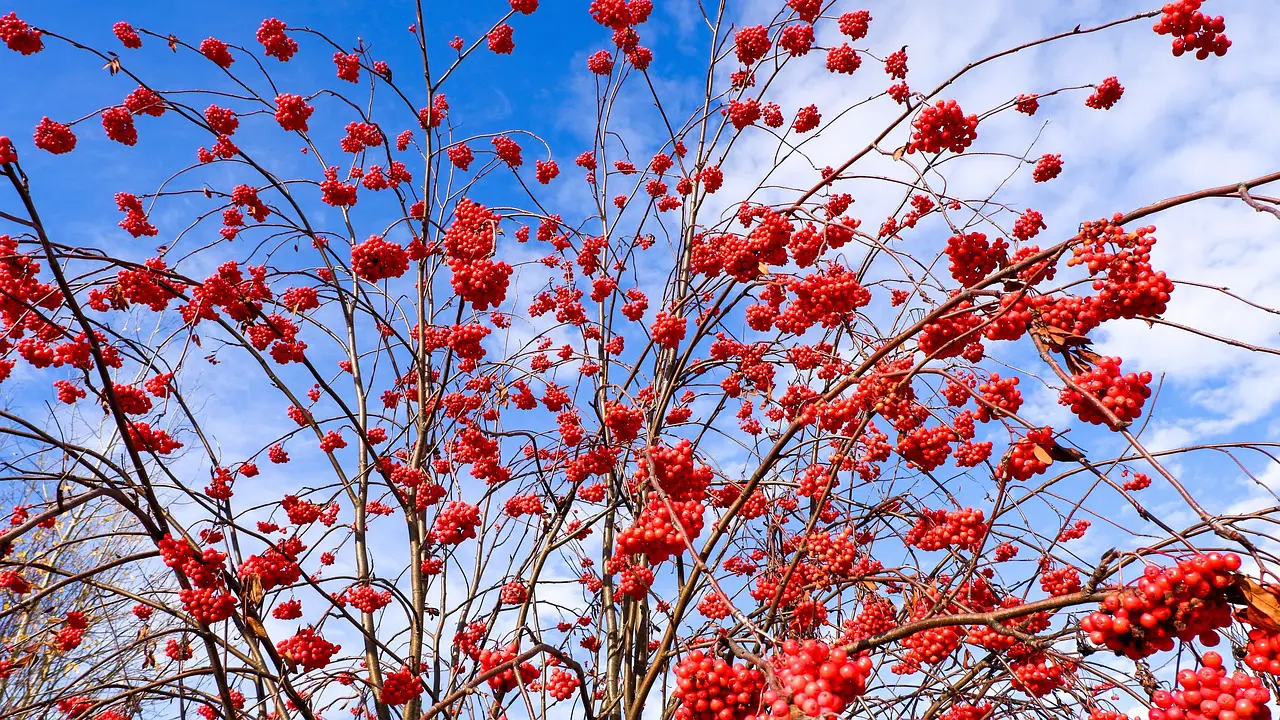The growth rate of Rowan trees in cool temperate zones typically ranges from 12 to 24 inches per year, depending on the specific conditions and care provided. These trees can reach maturity within 10 to 15 years, showcasing their adaptability and resilience in various environments.
Understanding Rowan Trees
Rowan trees, also known as Sorbus aucuparia or mountain ash, are beloved for their striking appearance and cultural significance. These deciduous trees are native to Europe and parts of Asia, thriving in a variety of climates, particularly in cool temperate zones. Rowan trees are recognized for their beautiful clusters of white flowers in spring and vibrant red berries in autumn, which attract wildlife and provide aesthetic value to gardens and landscapes.

Their ability to grow in cooler climates makes them an ideal choice for many regions. These trees are well-suited for areas with moderate rainfall and well-drained soil. Their growth patterns can vary significantly based on environmental factors such as soil quality, water availability, and temperature fluctuations. Understanding these factors is essential for anyone looking to cultivate a healthy Rowan tree.
Factors Influencing Growth Rate
Several key factors influence the growth rate of Rowan trees in cool temperate zones. These include:
- Soil Quality: Well-drained, slightly acidic soil promotes better growth. Rich organic matter can enhance nutrient availability.
- Watering: Regular watering during dry spells is crucial. However, overwatering can lead to root rot.
- Sunlight: Rowan trees prefer full sun to partial shade. Adequate sunlight enhances photosynthesis and growth.
- Temperature: Optimal growth occurs in temperatures ranging from 60°F to 75°F (15°C to 24°C). Extreme cold or heat can hinder development.
Growth Stages of Rowan Trees
Rowan trees progress through distinct growth stages that impact their overall development. Understanding these stages helps in proper care and management:

- Seedling Stage: This stage lasts for the first year of growth. The tree focuses on root development and establishing a strong base.
- Juvenile Stage: From years two to five, the tree experiences rapid height growth. Leaves become more abundant, and the tree starts to take shape.
- Mature Stage: Between years six and fifteen, the tree reaches its full height, producing flowers and berries for the first time.
- Decline Stage: After approximately twenty years, Rowan trees may enter a decline phase if not adequately maintained, leading to reduced vitality.
Cultivation Tips for Optimal Growth
For those interested in cultivating Rowan trees in cool temperate zones, several best practices can help ensure optimal growth:
- Planting Location: Choose a location that receives at least six hours of sunlight daily.
- Soil Preparation: Test the soil pH level. Amend soil with organic compost to improve fertility.
- Pest Management: Regularly inspect for pests such as aphids or caterpillars and manage them promptly.
- Pruning: Light pruning in late winter helps maintain shape and encourages new growth.
By following these cultivation tips and understanding the growth conditions, gardeners can successfully grow healthy Rowan trees that thrive in cool temperate regions. With patience and care, these trees will not only enhance landscapes but also provide ecological benefits by attracting birds and other wildlife.
Environmental Adaptations of Rowan Trees
Rowan trees exhibit remarkable adaptations to thrive in cool temperate zones. These adaptations enable them to withstand varying environmental conditions, including temperature fluctuations and soil variations. Understanding these features can help gardeners appreciate the resilience of Rowan trees.

Cold Tolerance
Rowan trees are particularly known for their cold tolerance. They can endure harsh winters, making them suitable for areas with significant snowfall and low temperatures. Their ability to enter dormancy allows them to conserve energy and survive until warmer months return.
- Chilling Requirement: Rowan trees require a certain number of chilling hours in winter to promote healthy growth in spring. This is essential for their flowering and fruiting processes.
- Frost Resistance: The flower buds of Rowan trees are resistant to late spring frosts, which can damage other flowering plants.
Soil Adaptability
Another noteworthy aspect of Rowan trees is their adaptability to various soil types. They are not overly fussy about soil conditions, which contributes to their widespread presence in different regions. While they prefer slightly acidic soils, they can tolerate clay, loam, and sandy soils.
- Drainage: Proper drainage is crucial. Rowan trees do not thrive in waterlogged conditions. Amending the soil with organic matter enhances drainage and nutrient content.
- Nutrient Needs: They benefit from regular fertilization during the growing season, especially if planted in nutrient-poor soils.
Propagation Methods
Rowan trees can be propagated through various methods, each suitable for different gardening scenarios. Understanding these methods can assist gardeners in selecting the best approach for their needs.
Seed Propagation
Seed propagation is a common method for growing Rowan trees. This technique involves planting seeds collected from mature berries.

- Harvesting Seeds: Collect ripe berries in late summer or early autumn.
- Preparing Seeds: Clean the seeds and stratify them by placing them in a moist medium and refrigerating them for 60-90 days. This mimics natural winter conditions.
- Sowing Seeds: Plant the seeds in pots or directly in the garden in spring after the last frost.
Cutting Propagation
Another effective method is propagating Rowan trees through cuttings. This method allows for quicker establishment of new plants.
- Selecting Cuttings: Take semi-hardwood cuttings in late summer or hardwood cuttings in winter.
- Treating Cuttings: Dip the cut ends in rooting hormone to enhance root development.
- Planting Cuttings: Place the cuttings in a well-draining potting mix and keep them moist until roots develop.
Pests and Diseases
Rowan trees, while resilient, are susceptible to certain pests and diseases. Awareness of these threats can help in maintaining tree health and vigor.
Pests
A variety of pests can affect Rowan trees. Regular monitoring is essential to catch infestations early.
- Aphids: These small insects feed on sap and can lead to stunted growth. Regular washing of leaves can help manage their populations.
- Scale Insects: Scale can cause yellowing leaves and weaken the tree. Horticultural oils can be effective against them.
Diseases
Rowan trees can also fall prey to several diseases that impact their health. Identifying symptoms early can prevent severe damage.
- Fire Blight: This bacterial disease causes blackened shoots and wilting leaves. Pruning infected areas promptly is crucial.
- Crown Rot: Caused by overwatering or poorly drained soils, this fungal disease affects the roots. Ensuring proper drainage is the best prevention.
By understanding environmental adaptations, propagation methods, and potential threats, gardeners can foster healthy growth of Rowan trees in cool temperate zones. These insights contribute to successful cultivation, ensuring that these beautiful trees flourish in various landscapes.
Rowan Tree Varieties and Their Characteristics
Rowan trees, or mountain ashes, come in a variety of species and cultivars. Each type has unique characteristics that may influence their growth rate, adaptability, and aesthetic appeal. Understanding these varieties helps in selecting the right type for specific landscapes.
Common Rowan Tree Species
Several species of Rowan trees thrive in cool temperate zones. Here are some of the most common:
- Sorbus aucuparia: Also known as the European mountain ash, this species is known for its striking clusters of red berries and vibrant autumn foliage. It typically grows to a height of 20 to 40 feet.
- Sorbus domestica: Known as the service tree, this species produces edible fruit and can grow up to 60 feet tall. It is less common but appreciated for its unique qualities.
- Sorbus commixta: This Japanese variety features large, showy clusters of berries and exhibits excellent cold tolerance, making it suitable for various climates.
- Sorbus vilmoriniana: Also known as the Chinese rowan, this species is prized for its ornamental value and can reach heights of 30 feet. Its berries are also attractive to wildlife.
Choosing the Right Variety
Selecting the appropriate Rowan tree variety depends on several factors, including climate, soil type, and intended use. Here are considerations for choosing a variety:
- Climate Adaptability: Ensure the chosen species is well-suited for the local climate, especially regarding temperature extremes.
- Soil Compatibility: Consider the soil type and drainage conditions where the tree will be planted. Some species prefer well-drained soils, while others can tolerate poorer conditions.
- Aesthetic Preferences: Different species produce various flower and fruit colors. Choose a variety that complements the surrounding landscape.
- Wildlife Attraction: If attracting birds and other wildlife is a goal, select species known for producing abundant fruit.
Rowan Trees in Landscaping
Integrating Rowan trees into landscaping designs can enhance aesthetic appeal and provide ecological benefits. Their vibrant foliage and berries make them a popular choice among gardeners and landscape designers.
Ornamental Uses
Rowan trees serve multiple ornamental purposes in gardens and public spaces:
- Shade Trees: Their broad canopy provides excellent shade for patios and outdoor areas.
- Specimen Trees: Planting a single Rowan tree in a prominent location can create a focal point in the landscape.
- Wildlife Gardens: These trees attract pollinators such as bees and butterflies, enhancing biodiversity.
Ecological Benefits
Beyond aesthetics, Rowan trees offer significant ecological contributions:
- Biodiversity Support: The berries provide food for various birds and small mammals during fall and winter.
- Pollinator Habitat: The flowers attract numerous pollinators, promoting healthy ecosystems.
- Soil Improvement: Their root systems help stabilize soil and prevent erosion.
Maintenance Requirements
Caring for Rowan trees involves several maintenance tasks to ensure their health and longevity. Regular attention to these tasks can enhance growth rates and overall vitality.
Watering Practices
Proper watering is crucial for the growth of Rowan trees. Here are some guidelines:
- Newly Planted Trees: Water thoroughly after planting. Continue to water regularly until established, typically within the first two years.
- Drought Conditions: During dry spells, provide supplemental watering to maintain moisture levels in the soil.
- Avoid Overwatering: Ensure that soil drains well; overwatering can lead to root rot.
Fertilization
Fertilizing Rowan trees appropriately can enhance growth. Here are some recommendations:
- Timing: Apply fertilizer in early spring before new growth begins.
- Type of Fertilizer: Use a balanced fertilizer that includes nitrogen, phosphorus, and potassium to support overall health.
- Organic Options: Compost or well-rotted manure can serve as excellent organic fertilizers, improving soil structure as well.
By understanding the various species of Rowan trees, their uses in landscaping, and proper maintenance practices, gardeners can effectively cultivate these stunning trees in cool temperate zones. The combination of beauty and ecological benefits makes Rowan trees a valuable addition to any garden or landscape.
Rowan Trees and Their Role in Ecosystems
Rowan trees play a significant role in local ecosystems, contributing to biodiversity and ecological stability. Their presence can enhance the habitat for various species, making them an essential component of woodland and forested areas.
Supporting Wildlife
The berries produced by Rowan trees are highly nutritious and serve as a food source for many birds and small mammals. This not only supports wildlife but also promotes seed dispersal, allowing Rowan trees to propagate naturally in different areas. Here are some wildlife that benefit from Rowan trees:
- Birds: Species such as thrushes, finches, and waxwings rely heavily on the berries during the colder months.
- Mammals: Small mammals, including squirrels and deer, may consume the leaves and bark, especially in times of food scarcity.
- Insects: The flowers attract bees and butterflies, which are crucial for pollination.
Soil Health Improvement
Rowan trees also contribute positively to soil health. Their root systems help prevent erosion and improve soil structure, making it easier for other plants to thrive. The organic matter returned to the soil from fallen leaves enriches the soil, fostering a healthy ecosystem.
Cultural Significance of Rowan Trees
Beyond their ecological benefits, Rowan trees hold cultural significance in various communities. They are often associated with folklore and traditions, symbolizing protection and strength in many cultures.
Folklore and Symbolism
In several cultures, Rowan trees are considered sacred. They are often planted near homes as a protective measure against evil spirits. The tree’s vibrant berries and beautiful foliage have inspired countless myths and legends.
- Protection: In Celtic folklore, it was believed that Rowan trees could ward off evil spirits and witches.
- Healing: Some traditions also associate the Rowan tree with healing properties, using its berries for medicinal purposes.
Modern Uses
Today, Rowan trees are valued not just for their beauty but also for their utility. Their wood is valued for its durability and is often used in crafting furniture and tools. Additionally, the berries can be made into jams, jellies, and even alcoholic beverages, showcasing their versatility.
Final Thoughts
The growth rate of Rowan trees in cool temperate zones can be impressive when proper care is provided. Understanding their environmental needs, adaptability, and ecological roles can lead to successful cultivation. Whether you are a gardener looking to enhance your landscape or someone interested in supporting local wildlife, Rowan trees offer numerous benefits.
These trees not only provide visual appeal with their stunning blooms and vibrant berries but also contribute positively to the ecosystem by supporting wildlife and improving soil health. Additionally, their rich cultural significance adds depth to their presence in gardens and landscapes.
Incorporating Rowan trees into your outdoor space can be a rewarding experience. As you nurture these beautiful trees, you are also fostering a healthier environment for future generations. With proper knowledge and care, Rowan trees can thrive in cool temperate zones, enriching both our landscapes and the ecosystems they support.
